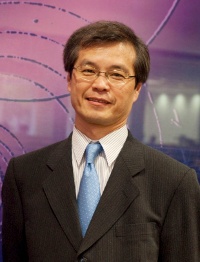 |
 |
|||||||||||||
|
|||||||||||||
|
|||||||||||||
|
On 17 March, the Science Council of Japan, a special organisation of scientists under the jurisdiction of the Prime Minister for the purpose of promoting science and having it reflected into national policy, released a recommendation on the major research programmes heading in the mid-term-about ten years, and issued a "Master Plan" (in Japanese) where they listed the top large-scale facilities and programmes. The list covers all fields from human and social science to biotechnology, energy and earth science, and of course, physics and engineering. The Council has closely examined a total of 285 big-science proposed projects with more than ten billion yen construction budget and big research programmes with more than one billion yen operational budget, and finally chose 43 of them as Japan's priority. Among those, nine projects listed KEK as one of their implementing agencies, including the upgrade of the KEKB accelerator, J-PARC, next-generation light source projects and the International Linear Collider.
“Well, it already means that many of KEK projects cost a lot,” said Hiroaki Aihara, Professor at the School of Science, University of Tokyo, who acts as a coordinator for the Japanese particle physics community during the master plan selection process, “but it makes sense since it is KEK's mission to coordinate big projects as an Inter-University Research Institute.” KEK is one of four Inter-University Research Institutes, which provide large infrastructures to fulfil the needs of researchers involved in universities across Japan, aiming to optimise the nation's budget and manpower in research by centralising the funding. “As a user of KEK's facility, University researchers like myself are very happy to see many of accelerator related projects selected in this master plan,” said Aihara. “However, being listed in this master plan is not a promise for funding. What we can say for sure is that it would be very difficult for a future project to be funded if it was not in it,” said Aihara. This kind of documentation has been produced commonly in Western countries where a demand for accountability has arisen in public debates over science policy. “But this is the first time ever that the Japanese scientific community produces such a plan,” said Aihara. In general, there are two different ways to realise big science projects: the top-down approach and the bottom-up approach. The projects implemented by the top-down approach, such as the International Space Station programme, are carried out with view of nation policy. In contrast, most of KEK's projects have been implemented by bottom-up approaches, selected through national and international review by the scientific community. Still, explanations towards taxpayers have not been enough. This document is expected to play an important role to publicise the next big science plans while they are still in the making and to help general public understand their significance. The master plan finishes with the recommendation to build an inter-ministerial framework to promote future big science projects. “Each future big science project will need coordination of policies among ministries. The ILC is a good example. Building a framework is an urgent mission,” said Aihara. The effort to produce this master plan has considerable meaning that science community started to take their accountability. -- Rika Takahashi |
|||||||||||||
| © International Linear Collider |
